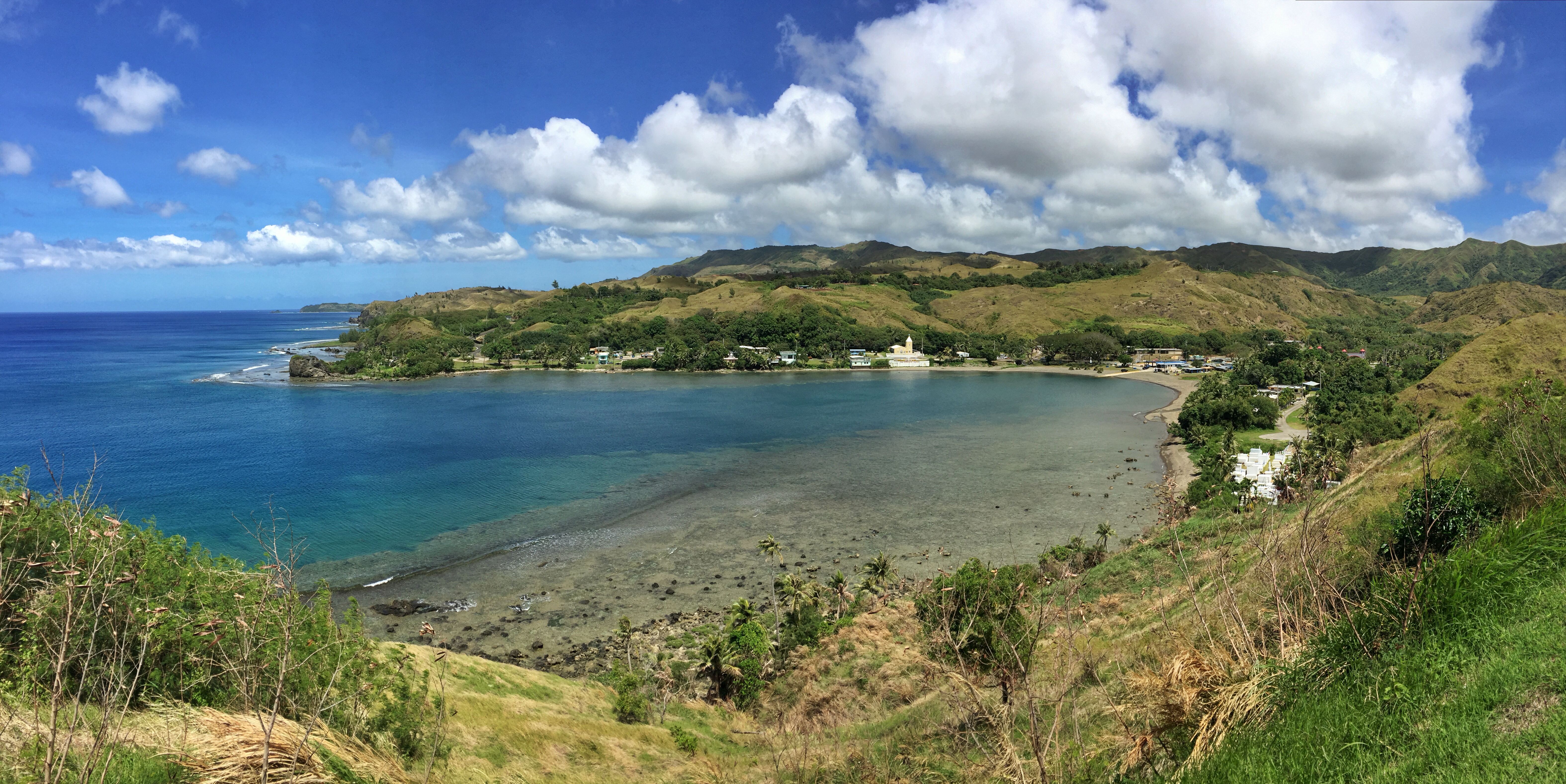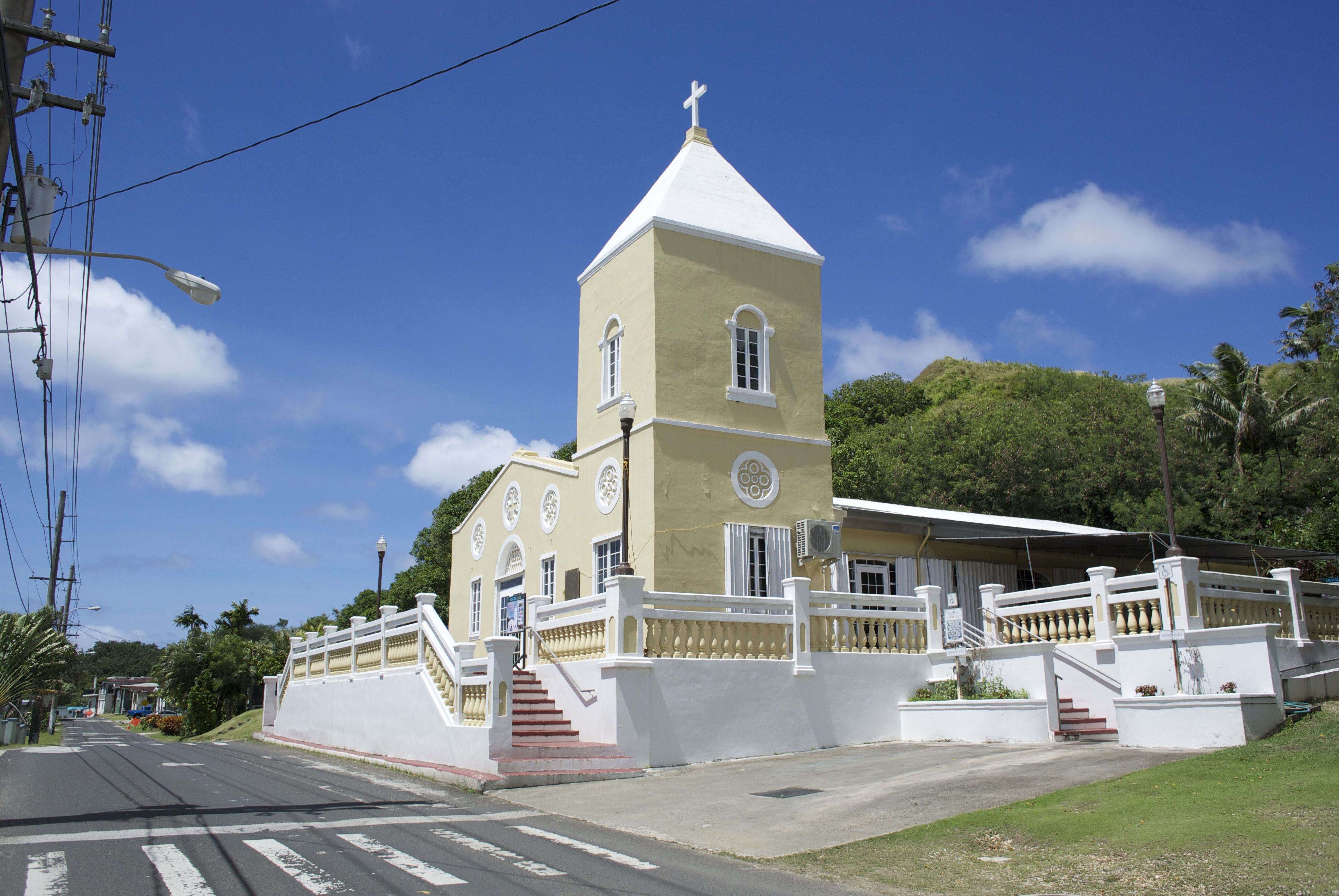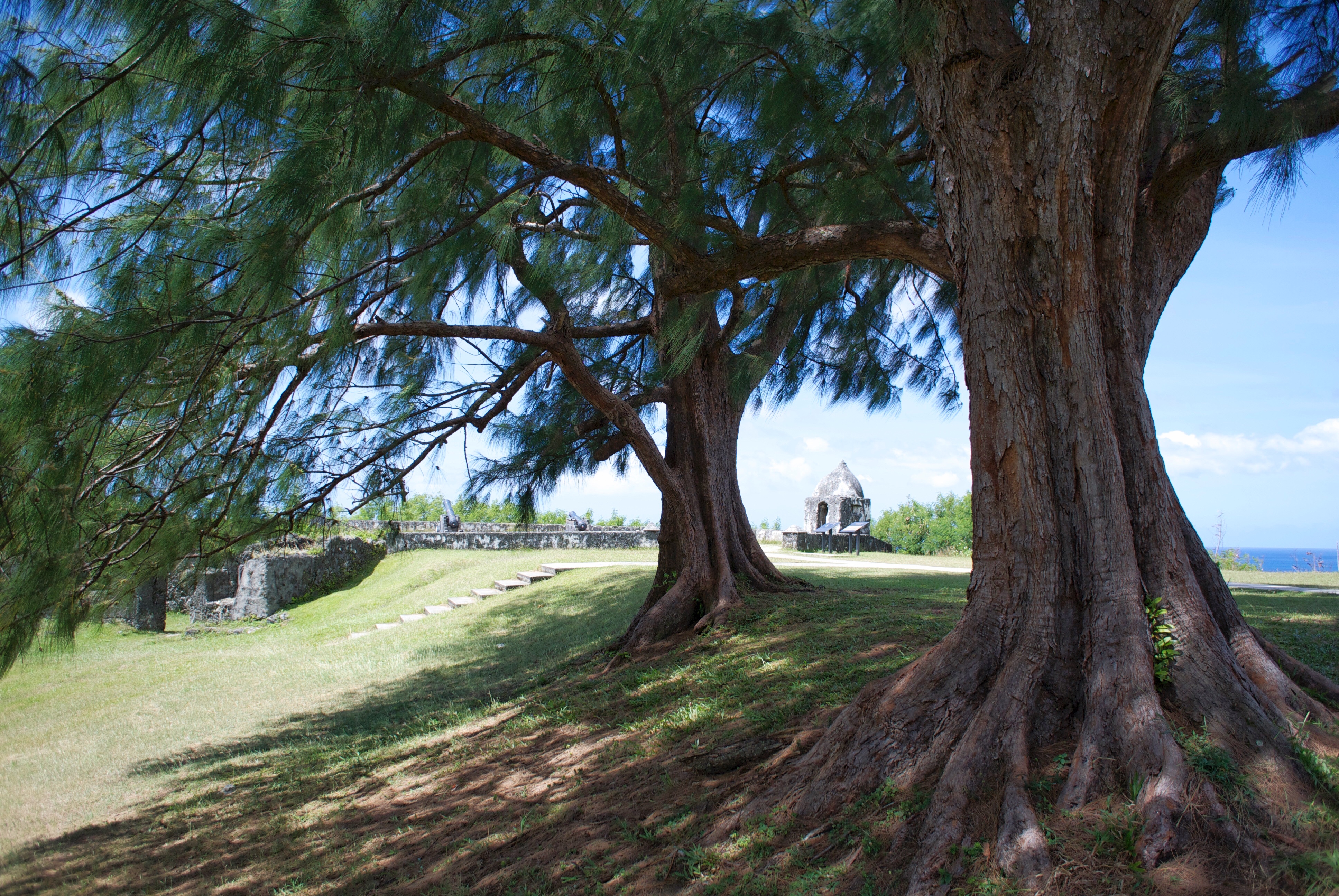
The village of Umatac is located on the southwestern coast of the island and is home to some of Guam’s most visited scenic and historical sites including the Cetti Bay overlook and Fort Nuestra Señora de la Soledåd, or Fort Soledad. “Umatac" is derived from the Chamorro word “uma,” which means to carry something on the back or a heavy load on the shoulders. Umatac is the smallest and the second oldest Guam village, and Umatac Bay is believed to be the site where explorer Ferdinand Magellan made first contact with Guam on March 6, 1521.
There are a number of historical sites to see in Umatac and many of them can be explored by walking along the quiet streets of the village. Starting from the Umatac Mayor’s office that is located on the bay, here are some sites of historical interest and significance:
F.Q. Sanchez Elementary School
Located across the street from the Umatac Mayor’s Office is Francisco Q. Sanchez Elementary School. Built in 1953, the school was designed by world-renowned architect Richard J. Neutra, who is considered among the most important modernist architects. Neutra's design sought to integrate the school with its surrounding environment, and provides a panoramic view of Umatac Bay. The school is named after Umatac’s great educator Franciso Quinata Sanchez and was listed on the National Register of Historic Places in 1998.
San Dionisio Church Ruins
First built in 1681, the San Dionisio church was constructed of wood with a palm thatched roof. In 1684, the church was destroyed by rebelling Chamorros. It was rebuilt, only to be destroyed again by a typhoon. In 1694, the church was reconstructed of coral masonry. The church crumbled in multiple earthquakes over the next two centuries but was reconstructed each time until 1902, when it was destroyed in yet another earthquake. Today the masonry ruins can be viewed in front of the F.Q. Sanchez Elementary School.
San Dionisio

Just up the street from the ruins,
the Dionisio Catholic Church is a prominent focal element in the village of Umatac. It was built in 1939 by local residents on the site of the Spanish Governor’s summer house. Having survived World War II, San Dionisio is one of Guam’s two oldest churches that are still in use. The architecture reflects Spanish colonial influence with its massive mason walls and detailed railings.
Palacio Ruins
Behind the San Dioniso church are the ruins of the Governor’s Palace that overlooked Umatac Bay, and served as the capital of Guam for a part of each year. Dating from the 1680s, it was a well-guarded fortification that served both residence and stronghold as the governor received magnificent galleon ships and smaller supply ships from east and west.
Outdoor Library
180 meters west of the church sits the tiny, unique Umatac Outdoor Library, the first public library in the southern part of Guam that was built in 1933. The library is only 2.1 meters high and 1.8 meters wide. At one time it was protected by a thatched shelter although the books on the shelves were exposed to the elements.
Fort Santo Angel
Up the street from the outdoor library and at the entrance of Umatac Bay, Fort Santo Angel was built on the rocky point in 1737 to protect the Spanish galleons from pirate ships as they moored outside Umatac Bay for provisions and rest. It was one of four Spanish forts that were built in Umatac.
Fort Soledad

No visit to southern Guam would be complete without stopping at Fort Nuestra Señora de la Soledad, or Fort Soledad. It is the last fort standing of four that were built around Umatac Bay in 1810 and it is named for Our Lady of Solitude. Fort Soledad provides a superior view of the village, the picturesque bay and coastline, and the southern mountain range. A docile carabao is often seen grazing in the grass near the fort. Fort Soledad is one of the most visited places in southern Guam and is an icon of the island’s Spanish-era history.
Celebrate Chamorro Month in Umatac
The entire month of March is a Mes Chamoru (Chamorro Month), a celebration that begins with the annual Guam History and Chamorro Heritage Festival in Umatac. This year’s festival will feature food, carnival games, live entertainment, and various sports competitions including spearfishing, paddling, volleyball, and motocross. The festival will also present the story of Magellan’s discovery of Guam through a reenactment performance.
During the festival, visitors can participate in free, guided walking tours of the village between 10AM and 3PM. This is a wonderful opportunity to explore the village, meet local residents, and enjoy a celebration of Chamorro history and culture in one of Guam’s oldest villages.
2017 Guam History and Chamorro Heritage Festival
Dates: February 24-25, March 3-6
Times: Friday 6PM to 12AM
Saturday & Sunday 10AM to 12AM
Discovery Day (March 6) 10AM to 12AM













